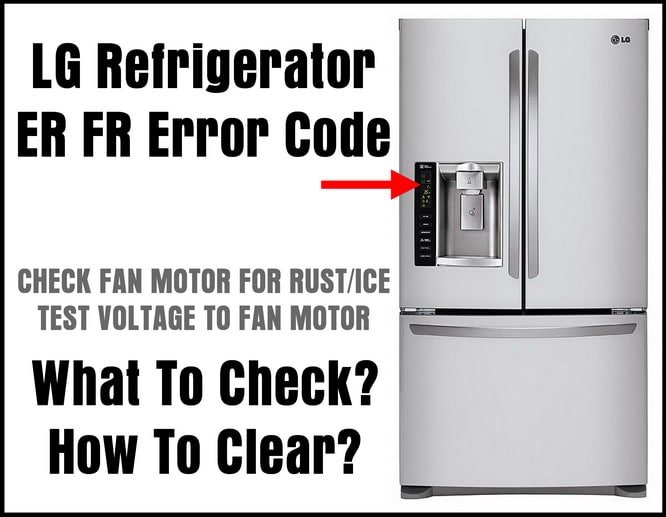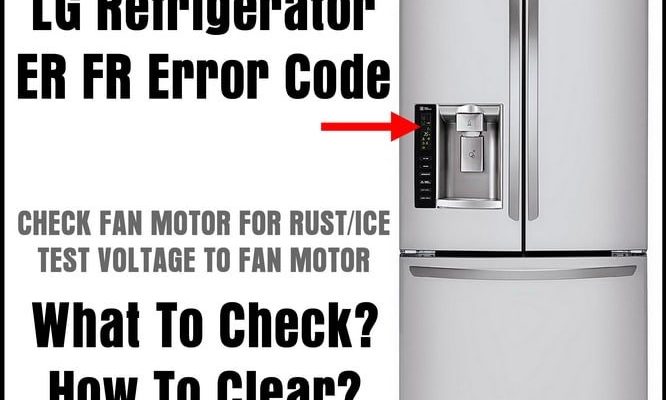
When your LG refrigerator displays an error code like E1, it’s essentially your fridge’s way of saying, “Hey, something’s not quite right here.” But what does E1 specifically mean? In simple terms, the E1 error code relates to a problem with the defrost sensor. The defrost sensor detects any issues with the temperature inside your fridge. It’s like having a watchful eye ensuring everything runs smoothly, so your food stays fresh and at the right temperature.
Understanding Error Code E1
Getting to the bottom of what “E1” means requires a closer look at your refrigerator’s internal processes. To put it simply, your LG refrigerator uses a defrost sensor to monitor the temperature. This sensor ensures that your fridge is defrosting properly and prevents ice buildup, which can impact performance. When something goes wrong with this sensor, it triggers the E1 error code.
Think of the defrost sensor as the thermostat of your fridge. Just like how a broken thermostat in your home can cause temperature fluctuations, a faulty defrost sensor can lead to improper cooling. This disruption is what causes the E1 alert to pop up, indicating that the sensor isn’t functioning correctly. Some common reasons for this malfunction could be a faulty sensor itself, wiring issues, or a problem with the control board.
So, what’s the impact? If left unresolved, a faulty defrost sensor can lead to excessive frost accumulation, affecting the efficiency of your refrigerator and potentially spoiling your food. But don’t fret—most of the time, handling this error is straightforward with a bit of patience and guidance.
Common Causes of the E1 Error
Wondering why your refrigerator is displaying this pesky E1 code? There are several potential culprits. First and foremost, the sensor might be damaged. Over time, sensors can wear down or become faulty due to age, similar to how old batteries lose their charge. When this happens, they can’t accurately measure temperature changes, leading to the E1 code alert.
Besides sensor issues, wiring problems can also be to blame. The connections that link your defrost sensor to the fridge’s control board are crucial for accurate communication. Imagine these connections like telephone lines; if there’s a disruption or damage, the message (temperature reading) doesn’t get through correctly, causing an error code to appear.
Lastly, the control board itself might have issues. Think of this as the brain of your refrigerator. If the control board malfunctions, it might not process the correct signals from the defrost sensor, resulting in the E1 code. Fortunately, identifying and fixing these problems is often within reach with a bit of troubleshooting.
Steps to Fix the E1 Error Code
So, how can you fix this issue and get your fridge back to its cooling duties? First, let’s inspect the defrost sensor. Sometimes, cleaning or resetting the sensor can resolve minor issues. Turn off your refrigerator, carefully remove any ice or frost buildup, and make sure the sensor is securely in place. Restart your fridge to see if this solves the problem.
If the problem persists, try checking the wiring for any visible signs of damage. Look for loose connections or worn-out wires, which could be disrupting the sensor’s communication with the control board. Gently fix any loose connections—like tightening a loose screw—and test your refrigerator again.
If these steps don’t resolve the issue, it might be time to consider replacing the defrost sensor or consulting a professional for repairs. Keeping your refrigerator’s manual on hand can provide additional instructions specific to your model. Remember, while DIY repairs can be tempting, complex issues are best handled by professionals to avoid further damage.
Preventative Tips to Avoid Future Errors
Prevention is key, and a few simple habits can help you avoid encountering the E1 error code in the future. Regular maintenance can do wonders—think of it as giving your fridge a routine health check-up. Clean the interior regularly to avoid ice buildup, which can strain the defrost sensor.
Another tip is to keep an eye on the refrigerator’s temperature settings. Ensure they’re consistently set to the recommended level. Just like setting your house thermostat too high or low can lead to discomfort, improper fridge temperatures can lead to sensor errors over time.
Lastly, listen to your fridge. If you notice unusual noises or fluctuations in temperature, take it as a cue to inspect the refrigerator or seek professional help. By staying proactive, you can keep your fridge running smoothly for years to come, ensuring your food remains fresh and your appliance error-free.
